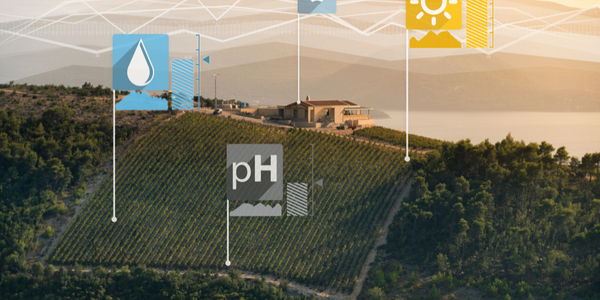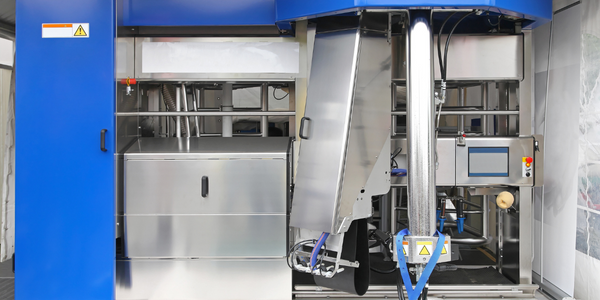Technology Category
- Analytics & Modeling - Big Data Analytics
- Sensors - Utility Meters
Applicable Industries
- Agriculture
- Cities & Municipalities
Use Cases
- Intelligent Urban Water Supply Management
- Leakage & Flood Monitoring
Services
- Data Science Services
- System Integration
About The Customer
The customer in this case study is the District Basin Authority of the Southern Apennine region in Italy. The Authority is responsible for governing the physical environment and protecting its water resources. It oversees the appropriate use of these resources, forecasts the region’s water supply, and prevents natural disasters and human-made hazards, such as illegal abstraction, discharges, and spills. The Authority is committed to continuously monitoring water quality and availability throughout the territory and has embarked on a project to build a network of remote sensors that can surveil the water system and analyze the data using a variety of technologies.
The Challenge
The Southern Apennine region in Italy, which is responsible for the country's central and southern water resources, is increasingly susceptible to the impacts of climate change. Unpredictable and violent thunderstorms are affecting the hydrogeological structure of the soil, while prolonged droughts are escalating the risk of potential desertification. The intensive use of the land for agriculture and other purposes has also heightened exposure to natural disasters. The District Basin Authority, which governs the physical environment and protects its water resources, is tasked with monitoring the appropriate use of these resources, forecasting the region’s water supply, and preventing natural and human-made hazards. The Authority initiated a project to continuously monitor water quality and availability throughout the territory, aiming to build a network of remote sensors that could surveil the water system and analyze the data using various technologies, including big data analytics and data science modeling.
The Solution
In collaboration with Hitachi Vantara, the Authority is developing a system to sample data from the field using specific multiparametric sensors, including video, thermographic, lidar, and others. This data, integrated with a GIS system and meteorological forecasts, flows into a big data analytics and data science system that allows officials to inspect water resources throughout the territory and generate actionable insights in real time to mitigate risks and protect the environment. The solution uses Hitachi Lumada Industrial Data Ops to capture data on local water resources at remote sites throughout the region. This data is then blended with enterprise data, GIS and external data such as weather forecasts. Hitachi Content Platform Anywhere syncs the captured video to a central file server, and Hitachi Content Intelligence enriches it with metadata before storing it appropriately in the Authority’s Hitachi Content Platform object storage system. By matching the sensor alerts to the video data and feeding the results into the Authority’s research applications, real-time data modeling, analysis, and monitoring via dashboards and control rooms are made possible.
Operational Impact

Case Study missing?
Start adding your own!
Register with your work email and create a new case study profile for your business.
Related Case Studies.

Case Study
Turning A Stadium Into A Smart Building
Honeywell created what it called the “intelligent system” for the National Stadium in Beijing, China, turning the venue for the opening and closing events at the 2008 Summer Olympics into a “smart building.” Designed by highly controversial artist Ai Weiwei, the “Bird’s Nest” remains one of the most impressive feats of stadium architecture in the world. The 250,000 square meter structure housed more than 100,000 athletes and spectators at a time. To accommodate such capacity, China turned to Honeywell’s EBI Integrated Building Management System to create an integrated “intelligent system” for improved building security, safety and energy efficiency.

Case Study
Intelligent Farming with ThingWorx Analytics
Z Farms was facing three challenges: costly irrigation systems with water as a limited resource, narrow optimal ranges of soil moisture for growth with difficult maintenance and farm operators could not simply turn on irrigation systems like a faucet.
.png)
Case Study
Smart Street Light Network (Copenhagen)
Key stakeholders are taking a comprehensive approach to rethinking smart city innovation. City leaders have collaborated through partnerships involving government, research institutions and solution providers. The Copenhagen Solutions Lab is one of the leading organizations at the forefront of this movement. By bringing together manufacturers with municipal buyers, the Copenhagen Solutions Lab has catalyzed the development and deployment of next-generation smart city innovations. Copenhagen is leveraging this unique approach to accelerate the implementation of smart city solutions. One of the primary focus areas is LED street lighting.

Case Study
Buoy Status Monitoring with LoRa
The Netherlands are well-known for their inland waterways, canals, sluices and of course port activities. The Dutch Ministry of Infrastructure indicates that there are thousands of buoys and fixed items in and near water environments that would profit from IoT monitoring. One of the problems with buoys for example, is that they get hit by ships and the anchor cable breaks. Without connectivity, it takes quite some time to find out that something has happened with that buoy. Not to mention the costs of renting a boat to go to the buoy to fix it. Another important issue, is that there is no real-time monitoring of the buoys at this moment. Only by physically visiting the object on the water, one gains insight in its status.









